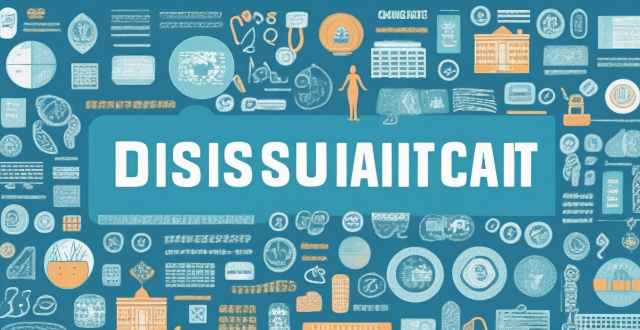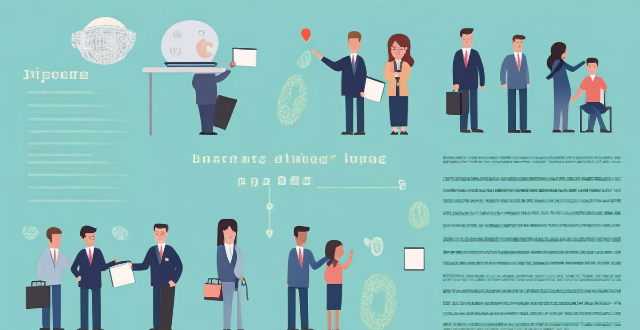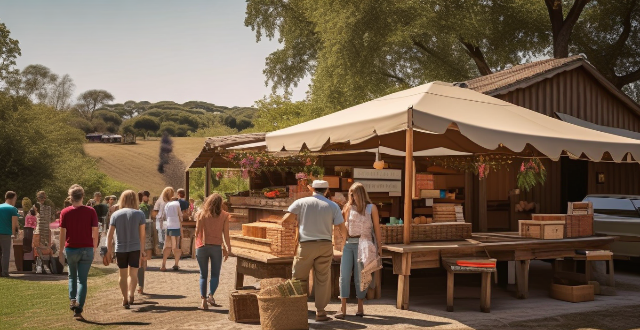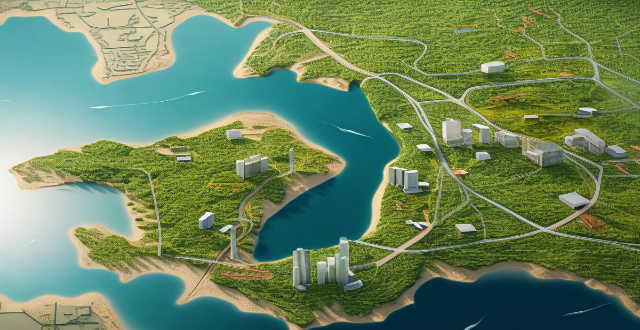Traveler Place

Is it necessary to have a return ticket for a tourist visa application ?
The text discusses the importance of a return ticket for a tourist visa application. It states that a return ticket is necessary to ensure the traveler has plans to return to their home country after the completion of their trip. Other documents required for a tourist visa application include a valid passport, hotel reservation, travel itinerary, financial evidence, invitation letter, travel insurance, application form, and photo. The return ticket is considered important as it shows the embassy or consulate that the traveler plans to return to their home country after their trip, reduces the chances of overstaying their visa period, assures the authorities of departure arrangements, and maintains the integrity of visa policies. If a traveler cannot provide a return ticket at the time of application, there is a high probability of visa rejection. However, an onward journey ticket can be provided as an alternative. Alternatives to a return ticket include one-way tickets, open-ended tickets, refundable tickets, and onward journey tickets. To ensure the availability of a return ticket, travelers should book in advance, choose flexible dates, opt for refundable tickets, and check with airlines about their policies. Not providing a return ticket can lead to visa rejection, blacklisting, impact future applications, and financial losses. Travel agents can assist in getting a return ticket or suggesting alternatives but may charge additional fees.

Is it safe for solo female travelers to go backpacking in Europe ?
Backpacking through Europe is a dream for many adventurous souls, including solo female travelers. However, the question of safety often arises when considering such an endeavor. Here's a comprehensive look at the factors involved: ## General Safety Considerations ### Cultural Awareness - Understanding local customs and norms can help avoid unsafe situations. - Researching ahead about the cultural dos and don'ts of each country can make your travel experience smoother and safer. ### Common Sense Precautions - Basic safety precautions apply universally. - Keep your valuables secure, avoid walking alone at night in poorly lit areas, and stay aware of your surroundings. ### Staying Connected - Having a way to communicate is essential for emergencies. - Consider getting a local SIM card or ensuring your phone plan includes international coverage. ## Specific Risks and Solutions ### Scams Targeting Solo Travelers - Be wary of common tourist scams. - Scammers often target solo travelers, especially females, with tricks like overcharging, fake petitions, or distraction techniques. ### Physical Safety Concerns - Trust your instincts if you feel unsafe. - If a situation or person makes you uncomfortable, remove yourself from the situation. ### Health and Medical Emergencies - Have a plan for medical situations. - Check if your health insurance covers international travel. ## Resources for Solo Female Travelers ### Traveler Communities - Joining communities of fellow travelers can provide support and advice. - Websites and forums like Solo Travel Society and Girls LOVE Travel offer tips, recommendations, and a sense of community. ### Safety Apps - There are apps designed specifically for safety. - Apps like bSafe or Kitestring allow you to alert contacts in case of an emergency or if you need to check in with someone. ### Local Law Enforcement Contacts - Know who to contact in case of an emergency. - Save local emergency numbers in your phone and make note of nearby police stations or consulates that can offer assistance. ## Conclusion ### Personal Responsibility - Your safety is largely in your own hands. - While Europe offers a wealth of experiences for solo female travelers, taking personal responsibility for your safety is key. This includes planning ahead, staying informed, and using common sense. ### Embrace the Journey - Enjoy the adventure while being cautious. - Don't let fear hold you back. With preparation and awareness, backpacking through Europe as a solo female traveler can be a transformative and incredibly rewarding experience.

How will interstellar exploration impact our understanding of the universe and our place within it ?
Interstellar exploration is a quest to understand the universe and our place in it. It has the potential to revolutionize scientific knowledge by unraveling cosmic origins, understanding planetary systems, and advancing physics. It can also impact human perspective by realizing our place in the cosmos, cultural and philosophical implications, and ethical considerations. Interstellar exploration stands at the threshold of transforming our knowledge and perceptions, pushing the boundaries of science, and reshaping humanity's self-image.

How can I meet other travelers while backpacking ?
Backpacking is an incredible way to explore the world and experience different cultures. However, it can sometimes get lonely on the road. Here's how you can meet other travelers and make your journey more enjoyable: - **Stay in Hostels:** Hostels are a great place to meet fellow backpackers. They usually have communal areas where people gather to socialize. Some hostels also organize events like pub crawls or city tours which are perfect opportunities to meet new people. - **Join Tour Groups:** Signing up for a tour group is another excellent way to connect with other travelers. You'll share experiences and create bonds over common interests. Opting for adventure activities like hiking or diving will likely put you with like-minded individuals. - **Use Social Media and Apps:** The digital age has made it easier than ever to connect with people who share your passion for travel. Websites like Lonely Planet have forums where you can find travel companions or get advice. Apps such as Backpackr and Travello allow you to find travelers going to the same place as you and plan to meet up. - **Take Part in Local Activities:** Engaging in local activities is not only a great way to immerse yourself in the culture but also to meet other travelers interested in the same experiences. Learning a skill like cooking or dancing is a fun way to meet people. Volunteering for local projects can introduce you to a network of travelers and locals alike. - **Attend Local Festivals:** Local festivals draw crowds, including other travelers looking to experience the event. This setting is ideal for meeting new people. Music festivals often attract a young, international crowd. Participating in traditional festivals offers a deeper understanding of the culture and chances to meet travelers. - **Hang Out at Popular Landmarks:** Popular tourist spots are natural magnets for travelers. Spending time at these locations increases your chances of meeting others. Places like the Eiffel Tower or the Great Wall of China are bound to have other tourists. Head to popular viewpoints or scenic spots; they often attract photographers and adventurers. - **Eat at Local Restaurants:** Dining at local eateries during peak meal times increases your likelihood of encountering other travelers. Many backpackers look for a good breakfast place; you can start your day with new friends. Places that offer good value for money tend to attract backpackers. - **Learn the Local Language:** Having some knowledge of the local language can help you connect with both locals and other travelers trying to learn it. Look for language exchange meetups where you can teach English in exchange for learning the local language. Attending a language course is another way to meet people with similar interests.

What do I need to know about VAT refunds when traveling internationally ?
VAT (Value Added Tax) is a consumption tax applied on products or services purchased within a country. International travelers may be eligible for a VAT refund if they purchase goods to take out of the country where they made the purchase, often referred to as "tax-free shopping". To get a VAT refund, travelers must check eligibility, get tax-free forms, keep receipts, procure documents from customs, claim their refund, and be aware of time limits, minimum purchase amounts, fees, and currency conversion. Tips for successful VAT refunds include planning ahead, consolidating purchases, tracking deadlines, verifying retailer participation, and consulting with experts. By understanding the VAT system and following these guidelines, international travelers can potentially save money on their shopping experiences.

What safety measures are in place on cruise ships ?
Cruise ships implement various safety measures to ensure the well-being of passengers and crew, including muster drills, life-saving equipment, fire safety systems, medical facilities, security personnel, emergency response plans, navigation systems, and regular maintenance checks.

What are the potential consequences of not having adequate biosafety policies in place ?
Biosafety policies are crucial for handling and containing biological materials safely. Inadequate biosafety measures can lead to direct and indirect exposure to pathogens, spread of disease, environmental contamination, legal and ethical issues, and economic impacts. It is vital for institutions and researchers to prioritize biosafety measures to protect human health, the environment, and society.

Are there any apps that help in planning a road trip route with attractions and food stops ?
When planning a road trip, there are several apps available that can assist in route planning, finding attractions, and discovering food stops and restaurants. Google Maps offers turn-by-turn directions, points of interest, and customization options. Roadtrippers helps plan a comprehensive itinerary, suggests interesting places to visit, and offers themed trips. Sygic Travel provides information on top attractions, offline maps, and route optimization. Waze offers real-time traffic updates, community-driven features, and voice commands for safer driving. For food stops and restaurants, Yelp provides restaurant reviews, filtering options, and user photos. OpenTable allows reservations, dining specials, and cuisine type filtering. Zomato offers menu viewing, user ratings, and food photos. TripAdvisor provides traveler reviews, top restaurant listings, and nearby options. Combination apps like TripIt offer itinerary management, attraction and dining suggestions, and integration with other apps. Maps.me provides offline maps, POI categories, and custom routing. RV Trip Wizard plans RV-friendly routes, includes campground information, and lists attractions and restaurants suitable for RVers. TouristEye accesses pre-made guides, creates custom itineraries, and allows collaborative planning. Overall, these apps make it easier than ever to plan the perfect road trip by combining features such as route planning, finding attractions, and discovering food stops and restaurants into one comprehensive tool.

How does the method of loci (memory palace) work scientifically ?
The method of loci, or memory palace technique, is a mnemonic device that enhances memory recall by associating information with specific locations in a familiar place. The scientific explanation behind its effectiveness involves visualization, spatial navigation, and association processes in the brain, particularly engaging the prefrontal cortex and hippocampus. Benefits include improved memory recall, enhanced learning, increased focus, and reduced anxiety. To use this method, one should choose a familiar place, create mental images, assign locations, perform mental walkthroughs, and regularly review and refine the process.

How can I protect my home from wildfires ?
Wildfires can cause significant damage to homes and properties, but there are steps you can take to protect your home. Create a defensible space by removing dead vegetation, trimming trees and shrubs, creating a firebreak, mowing grass regularly, and removing combustible materials. Use fire-resistant materials such as Class A roofing materials, stucco siding, dual-pane windows with tempered glass, and solid core doors made of metal or fiberglass. Maintain your home by cleaning gutters, inspecting roofs and chimneys, checking electrical wiring, and maintaining heating systems. Have an evacuation plan in place by identifying escape routes, having a meeting place, packing emergency kits, and practicing evacuation drills.

Are there any specific destinations considered safer for solo female travelers ?
There are several destinations considered safer for solo female travelers, including New Zealand, Iceland, Japan, Sweden, Canada, Finland, Australia, Norway, Slovenia, and Chile. These countries are known for their low crime rates, women-friendly cultures, and well-developed tourism infrastructures that cater to solo travelers. However, personal safety also depends on individual behavior and awareness while traveling. It's always recommended to research specific regions, follow local guidelines, and trust your instincts when exploring new places.

How can I contribute to conservation efforts while on a wildlife tour ?
Conservation efforts are crucial for the survival of many animal species. As a responsible traveler, you can contribute to these efforts while enjoying your wildlife tour by following these guidelines: 1. Respect wildlife and stay on designated paths. 2. Do not litter or remove natural objects. 3. Report any illegal activities related to wildlife. 4. Support local conservation organizations through donations, volunteering, educational programs, adopting an animal, and spreading awareness. 5. Practice sustainable tourism by choosing eco-friendly accommodations, using public transportation or carpooling, purchasing local products, minimizing water usage, and educating yourself before traveling. By following these guidelines, you can make a positive impact on the environment and contribute to conservation efforts while enjoying your wildlife tour.

Where can I find reviews and ratings for different luxury resorts ?
When searching for reviews and ratings of luxury resorts, reliable sources include online travel agencies (OTAs) like Booking.com, Expedia, Agoda, and TripAdvisor; luxury travel forums and blogs such as Luxury Travel Diary, The Luxury Travel Expert, and JustLuxe; official resort websites featuring guest testimonials and experiences; social media platforms like Instagram, Facebook, and Twitter; consumer reporting websites Trustpilot, Consumer Affairs, and Yelp; word of mouth recommendations from friends, family, travel agents, and tour operators; professional reviews and awards from Condé Nast Traveler, Forbes Travel Guide, and Travel + Leisure; video reviews and vlogs on YouTube, Vimeo, and TikTok; and industry publications and magazines like Luxury Travel Magazine, Departures, and Robb Report.

What international agreements are in place to combat greenhouse gas emissions ?
The text provides an overview of several international agreements aimed at combating greenhouse gas emissions, including the Paris Agreement, Kyoto Protocol, and United Nations Framework Convention on Climate Change (UNFCCC). The Paris Agreement, adopted by 197 countries in 2015, sets targets for reducing emissions and adapting to climate change impacts. The Kyoto Protocol, effective from 2005, introduced binding emissions reduction targets for developed countries. The UNFCCC, a treaty from 1992, established principles and mechanisms to address climate change. Additionally, there are regional and sectoral agreements targeting specific industries or regions.

What measures can be taken to prevent the spread of infectious diseases across borders ?
The text discusses measures to prevent the spread of infectious diseases across borders, including surveillance and early warning systems, travel restrictions and border controls, vaccination programs, public health infrastructure and preparedness, collaboration and information sharing, and education and public awareness. The Global Health Security Agenda (GHSA) promotes robust surveillance systems for early detection of outbreaks, while the International Health Regulations (IHR) require countries to develop core public health capacities. Travel restrictions such as entry/exit screening and quarantine policies can help prevent introduction of diseases into new regions. Vaccination programs, including routine immunization and vaccination requirements for travelers, reduce the risk of disease spread. Strong public health infrastructure and emergency response plans are crucial for containing outbreaks. Collaboration and information sharing through global health security initiatives and open access to data enable quicker identification of patterns and trends. Education and public awareness campaigns can reduce transmission rates and discourage travel to high-risk areas. By implementing these measures, countries can work together to protect public health globally.

How do I find the best restaurants while on a trip ?
Finding the best restaurants while traveling enhances the overall experience by allowing travelers to savor local cuisine. Here's a breakdown of strategies for discovering great eateries: 1. **Research Before You Go**: Utilize online reviews, blogs, and social media platforms for recommendations. 2. **Use Technology Wisely**: Leverage food apps and Google Maps for real-time information and user ratings. 3. **Ask the Locals**: Hotel staff and tour guides often have valuable insights into the best dining spots. 4. **Be Open to Serendipity**: Explore neighborhoods and engage with local shopkeepers for off-the-beaten-path finds. 5. **Consider These Points**: Pay attention to cuisine variety, dietary restrictions, and budget when choosing restaurants. 6. **Post-Meal Activities**: Leaving reviews and sharing experiences can help other travelers and support local businesses.

How do climate disasters affect the psychological resilience of affected populations, and what support systems can be put in place ?
Climate disasters, such as hurricanes, floods, wildfires, and droughts, can have a profound impact on the psychological resilience of affected populations. Psychological resilience refers to the ability to cope with adversity, adapt to change, and bounce back from difficult situations. When faced with climate disasters, individuals and communities may experience stress, anxiety, depression, and post-traumatic stress disorder (PTSD). Effects of Climate Disasters on Psychological Resilience: - Loss of Property and Livelihoods: Climate disasters often result in the loss of homes, businesses, and livelihoods. This can lead to financial instability, which is a significant source of stress and anxiety for many people. - Displacement and Uprooting: In severe cases, climate disasters can force people to relocate or evacuate their homes temporarily or permanently. This displacement can disrupt social networks and support systems, leading to feelings of isolation and despair. - Trauma and Grief: Witnessing or experiencing injury, loss of life, or damage to property can cause traumatic reactions. Grief over lost loved ones or familiar surroundings can also affect mental health. - Uncertainty and Fear: The unpredictable nature of climate disasters can create ongoing uncertainty about future events, leading to chronic stress and fear about potential threats. - Health Concerns: Exposure to extreme weather conditions or contaminated water sources can raise concerns about physical health, adding another layer of stress. Support Systems for Enhancing Psychological Resilience: To help affected populations cope with the psychological impacts of climate disasters, various support systems can be put in place: Community-Based Support: - Counseling Services: Providing access to mental health professionals who can offer counseling services to those affected by climate disasters. - Support Groups: Creating peer support groups where individuals can share their experiences and provide mutual support. - Community Events: Organizing community events that promote social interaction and foster a sense of belonging within the community. Government Interventions: - Financial Aid: Providing financial assistance to help individuals and families rebuild their lives and recover from economic losses. - Housing Solutions: Ensuring adequate temporary housing while reconstruction takes place and investing in more resilient infrastructure to minimize future risks. - Educational Programs: Implementing educational programs that teach coping strategies and preparedness for future climate events. Non-Governmental Organizations (NGOs): - Emergency Relief: Providing immediate relief efforts such as food, water, and medical supplies to affected areas. - Rehabilitation Projects: Undertaking rehabilitation projects that focus on restoring livelihoods and rebuilding communities. - Awareness Campaigns: Conducting awareness campaigns to educate the public about the psychological effects of climate disasters and available resources for support. International Cooperation: - Global Funding: Securing global funding for countries heavily impacted by climate disasters to support recovery efforts. - Research Collaboration: Engaging in international research collaborations to study the long-term psychological effects of climate disasters and develop best practices for intervention. - Capacity Building: Working with developing nations to build capacity for mental health services and disaster response.

What are the best places to go for adventure travel in Asia ?
Asia is a continent filled with diverse cultures, breathtaking landscapes, and thrilling adventures. Whether you're seeking adrenaline-pumping activities or off-the-beaten-path explorations, Asia has something to offer every type of adventure traveler. Here are some of the best places to go for adventure travel in Asia: 1. Nepal - Trekking and Mountaineering 2. Thailand - Island Hopping and Water Sports 3. Vietnam - Motorbiking and Rock Climbing 4. Indonesia - Volcano Hiking and Diving 5. Japan - Skiing and Hot Springs

What are the current climate policies in place to address global warming ?
The text discusses various current climate policies aimed at addressing global warming, including national and international agreements and corporate actions. National policies focus on renewable energy initiatives, carbon pricing mechanisms, energy efficiency standards, and deforestation reduction. International agreements like the Paris Agreement and Kyoto Protocol set targets for greenhouse gas emissions reductions. REDD+ provides financial incentives for reducing deforestation. Corporate actions involve CSR initiatives and carbon offsetting programs to minimize environmental impact.

Are there any restrictions on who can shop at duty-free stores ?
Duty-free shopping offers savings for international travelers, but not everyone can shop tax-free. Eligibility criteria include traveling internationally, being a departing or arriving passenger, having connecting flights outside the country, and complying with quantity limits and customs regulations. Restrictions may apply based on age, nationality, transit status, visa requirements, and security concerns. Understanding these guidelines helps travelers make the most of duty-free opportunities.

What policies and regulations are currently in place to encourage more sustainable supply chain practices ?
Policies and Regulations Encouraging Sustainable Supply Chain Practices discusses various government initiatives, industry standards, and international agreements that promote sustainable supply chain practices. Government policies such as green procurement, carbon pricing, and eco-labels incentivize businesses to adopt environmentally friendly operations. Industry standards like CSR and LCA help companies understand and reduce their ecological footprint. International treaties like the Paris Agreement and Basel Convention provide a global framework for sustainable practices. Together, these measures form a comprehensive system to support sustainable supply chains worldwide.